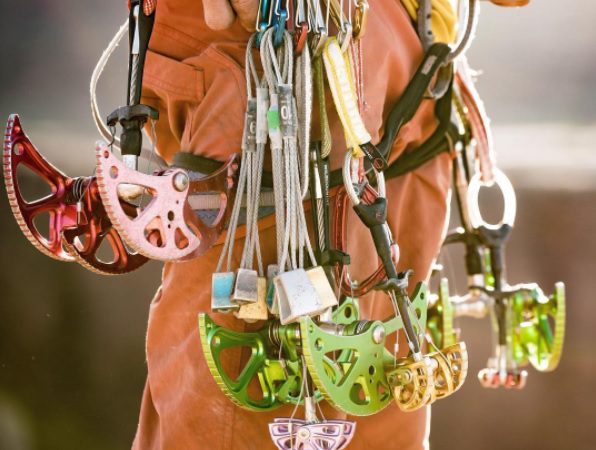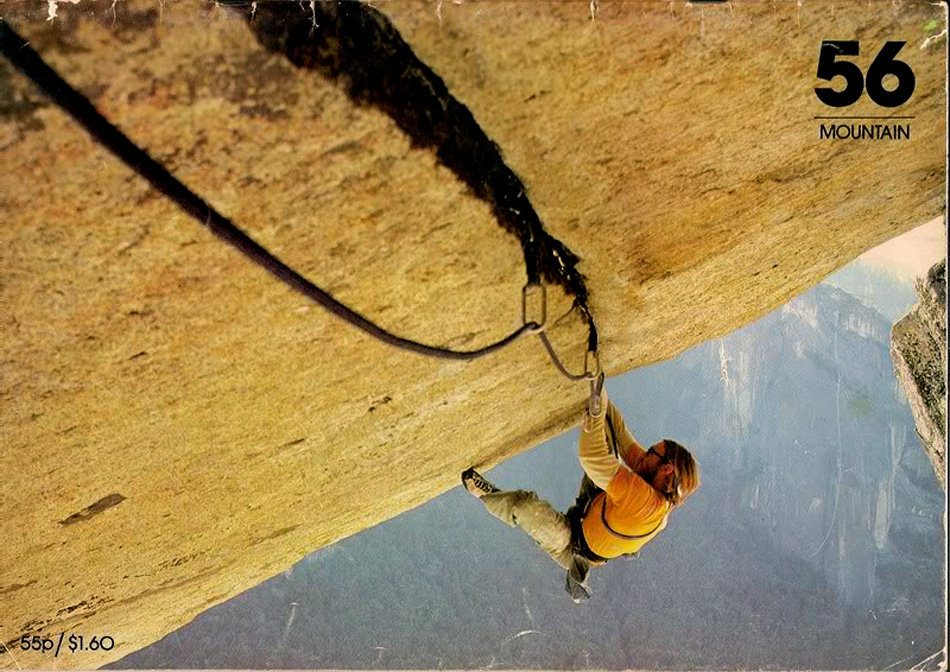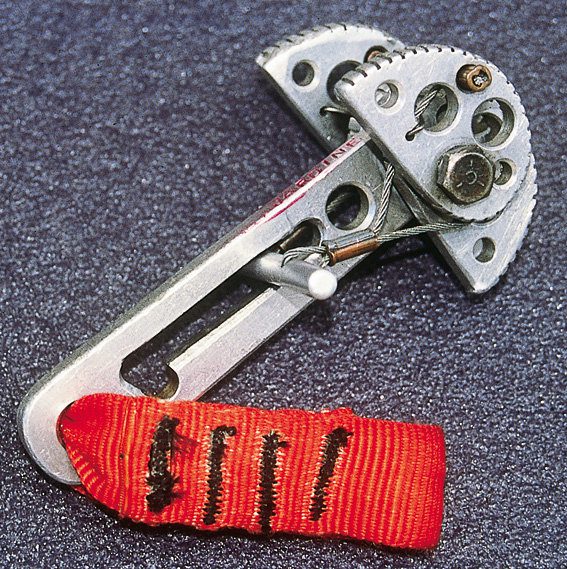The History of Wild Country Friends

The camming device is one of the greatest pieces of climbing gear ever made, just try to imagine a world without them. Their short history began in 1977 when British climber Mark Vallance founded the company Wild Country, which would go on to produce the Friend.
Wild Country was founded in a small shop in U.K.’s Peak District, but it all started when Ray Jardine met Vallance in 1972 in Colorado.
Vallance was on his way home from Antarctica and they were both working for Outward Bound. Between courses they would head out climbing together.
On one of their first days out, Jardine had brought the first-ever prototype Friend with him, it had four cams on a shaft with no trigger or stem. Vallance recalls it required four hands to get it out of the rock.

“The need was apparent, at least to me, but the actual configuration was elusive to me and everyone else,” said Jardine 25 years later.
“Seeking a device that would anchor itself in a crack, and hold with greater power the harder the pull, I began the inventive process in 1971 with a dual sliding wedge design.
Taking advantage of my aerospace engineering background I analyzed this configuration and found it mathematically unsound. The internal friction between any kind of wedges reduce their holding power and in many situations such a device could pull out. I was inventing for my own use and was not about to compromise safety.”
In 1974, Jardine and two partners took the prototypes and attempted The Nose in a day, but afternoon showers slowed them down and they were forced to bivy at camp V. They still managed to climb it in 20 hours of climbing and cut the previous three-day record in half.

In 1975, the two were climbing and Jardine had brought a blue nylon bag that rattled when carried. They were in Yosemite and below Washington Column about to make the first ascent of Power Failure, a five-pitch 5.11a that Linda McGinnis joined them on.
Vallance was told that what was in the bag was top secret and no one could know. Jardine opened it and revealed a number of prototypes, some with polished aluminium and filed features with working trigger and others were bent, busted or slung together.
It was neither Vallance nor Jardine that named the soon-to-be-cams Friends, instead it was Chris Walker. One day Walker and Jardine were heading out climbing with others who were not in on the top secret prototypes.
Wondering if Jardine brought the blue nylon bag of goodies, but not wanting to give away the secret, he said, “Have you brought the bag of friends, Ray?”
During the mid-1970s, Jardine pushed hard climbs using his prototypes. He made ascents of routes like Crimson Cringe 5.12, Hangdog Flyer 5.12c, Separate Reality 5.12, Owl Roof 5.12c, Rostrum 5.12c and the first 5.13 in Yosemite called Phoenix.
Jardine tried to start production in America but ran into problems. He then asked Vallence to make Friends in England. They worked together on the idea in the summer of 1977 but could not find anyone who would extrude the 7075 stem alloy.
The prices were just too high to produce compared to passive protection, simple nuts with aluminium blobs and wires, were cheaper.

Jardine left England for California likely thinking he hit another dead end. But it only took a few weeks before things were looking good. Vallence borrowed money from the bank and took out a second mortgage on his house. He then started to place orders for tools and components.
By mid-fall, Vallence left his job and officially started Wild Country and Friends. Though expensive, the Friends became immediate hits with climbers. They sold over five thousand units in their first year.
They soon expanded and started to make harness, carabiners, nut, tents, backpacks and technical clothing. In 1979, Wild Country introduced Rocks, nuts that had three points of contact instead of two.
In 1980, strong mountaineer Patt Littlejohn collaborated with Wild Country to produce the Littlejohn harness, it went on to become Britain’s most successful.
In the mid-1980s, they acquired a Welsh climbing gear manufacturer called Clog and teamed up with Jerry Moffat to produce the Moffat harness.
The next step in Friend development came in 1988 when Wild Country launched the first flexible stem Technical Friend. The next year, they brought in aircraft technology to produce rotary swaging for the flexible stem.
About a decade later, they took the size of Friends to the next level and made Technical Friends 5 and 6 for crack up to 7.5 inches.
The following year, they launched Offset Friends for tapered and flared cracks. Every innovation led to climbers heading into new terrain.
In 2002, the launched the smallest cam device in the world with the Zero Cams that allowed climbers to protect cracks 5.5 mm wide. Fast forward to 2011, Wild Country released Helium Friends and a few years later the new Friends.
The new Friends are built with a twin axle with a 13.75 constant cam angle thousands of climbers have come to rely on. It combines classic features with new additions like the hollow axles, skimmed lobe grip and 12 mm dyneema.
For the past 40 years, Friends have been awkwardly, safely, consistently, confidently and desperately placed into cracks around the world. Almost all of the great climbers used them for some of their biggest ascents, from the crags in the U.K. to the peaks in Patagonia.
They were the first camming device and changed the history of our sport, allowing for difficult free climbs to be opened and repeated. Who knows where the sport of climbing will be in 40 years, but as long as we have our Friends it’s going to be a good time.


